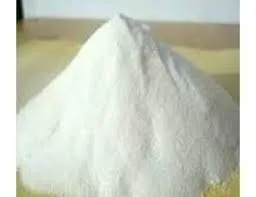
Sep . 04, 2024 08:01 Back to list
celulosa hpmc
The Role of Cellulose and HPMC in Modern Applications
Cellulose, a fundamental biopolymer found in the cell walls of plants, serves as a crucial component in various applications across multiple industries. It is the most abundant organic polymer on Earth, boasting an intricate structure that contributes to its unique properties. One of the most popular derivatives of cellulose in contemporary applications is Hydroxypropyl Methylcellulose (HPMC). HPMC combines the natural attributes of cellulose with enhanced functionalities, making it a versatile compound in various sectors, including pharmaceuticals, food, and construction.
The Role of Cellulose and HPMC in Modern Applications
In the pharmaceutical industry, HPMC serves as a critical excipient in numerous drug formulations. It is widely used in the production of hydrophilic matrix systems for controlled-release tablets. The ability of HPMC to swell upon contact with water allows for a gradual release of active pharmaceutical ingredients, enhancing patient compliance and ensuring effective therapeutic outcomes. Additionally, HPMC is utilized as a binder in tablet formulations and a stabilizer in suspensions and emulsions, demonstrating its multifaceted role in drug delivery systems.
celulosa hpmc

The food industry has also embraced HPMC, recognizing its value as a thickening, gelling, and emulsifying agent. It is commonly used in gluten-free products to improve texture and moisture retention, mimicking the properties of gluten. HPMC also serves as a fat replacer, offering a healthier alternative without compromising the sensory qualities of food. Moreover, its use in food applications aligns with consumer demands for clean-label ingredients, as HPMC is derived from natural cellulose, making it a preferred choice for health-conscious consumers.
In the construction sector, HPMC acts as a vital additive in mortars and plasters. Its water retention properties enhance workability, allowing builders to achieve smoother finishes and extend the setting times of their mixtures. Furthermore, HPMC improves adhesion and prevents cracking, ensuring the durability and strength of construction materials. These features make it an indispensable material in modern building practices.
In conclusion, cellulose and its derivative, HPMC, have carved a niche for themselves across various industries owing to their unique properties and functionalities. As the demand for sustainable and effective materials continues to grow, the role of cellulose and HPMC will likely expand, paving the way for innovative applications that prioritize health, safety, and environmental sustainability. The future undoubtedly holds great potential for these remarkable compounds, as we continue to explore their capabilities in addressing the challenges of modern society.
-
Versatile Hpmc Uses in Different Industries
NewsJun.19,2025
-
Redispersible Powder's Role in Enhancing Durability of Construction Products
NewsJun.19,2025
-
Hydroxyethyl Cellulose Applications Driving Green Industrial Processes
NewsJun.19,2025
-
Exploring Different Redispersible Polymer Powder
NewsJun.19,2025
-
Choosing the Right Mortar Bonding Agent
NewsJun.19,2025
-
Applications and Significance of China Hpmc in Modern Industries
NewsJun.19,2025







